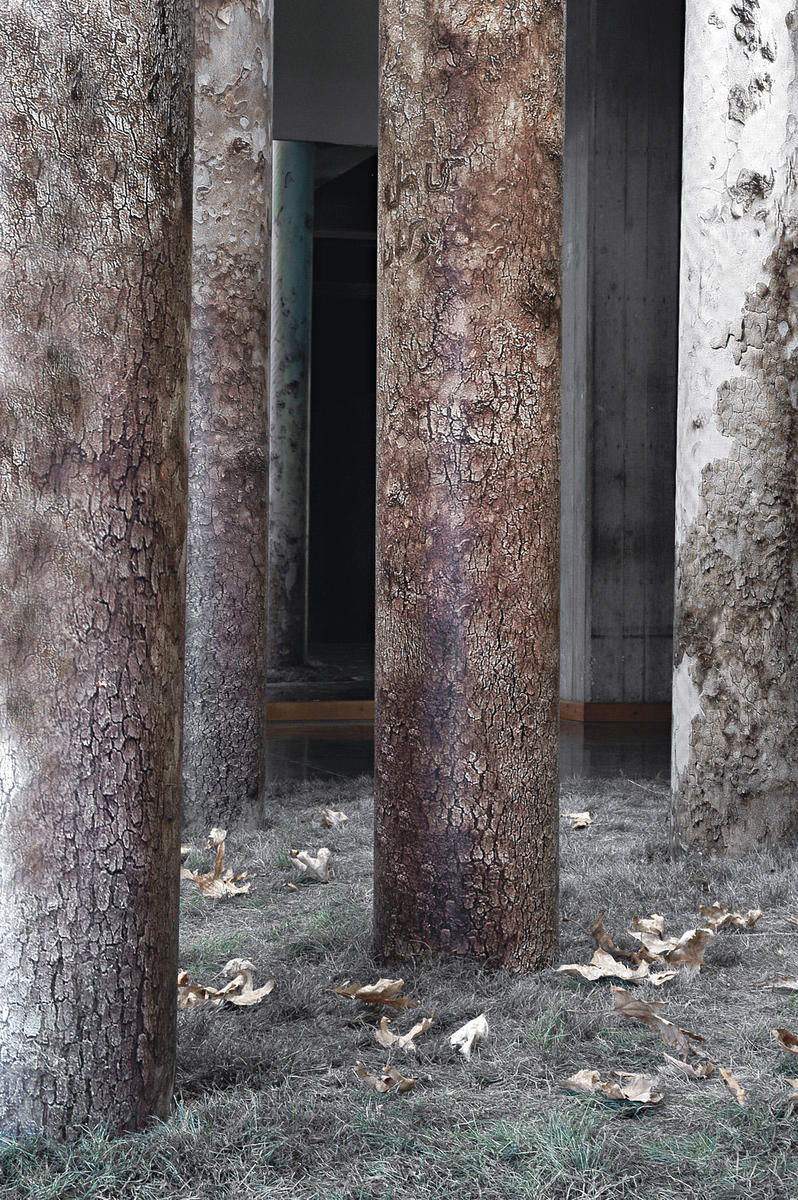
Tehran
Gardens of Persia; Old Wisdom, New Visions
Tehran Museum of Contemporary Art
September 13–November 3, 2004
Persian gardens are commonly recognized as reflections of a promised Paradise, a central motif within Persian culture. The constitution of these gardens follows a traditional morphology, complete with a series of symbols referring to a transcendental world. Such symbolism is inspired by an ancient literature continuously referencing a distant Heaven.
While the Persian gardens are superb architectural achievements, it is arguably the divine aspect and the religious associations therein that have inspired a recent exhibition at the Tehran Museum of Contemporary Art (TMCA).
Despite lofty aspirations, the exhibition in question as a whole is hardly cohesive. To begin with, the show includes a series of antique art works presented in parallel to historical texts on gardens in Iran. Needless to say, the show is packed with a wide, if not random, range of artists. The choice of the museum directors to be inclusive in this exhibition is perhaps cause for chaos.
Importantly, the exhibition conveys a nostalgic sense in relation to a heritage that seems (dramatically) at the brink of extinction. Few of the artists have managed to engage what is otherwise a surface level romanticism.
Mahdokht, a video by NY-based Shirin Neshat, is entirely consistent the artist’s tendency to engage in a symbolic signification of the social role of women. Mahdokht (based on a Shahrnoush Parsipour story) is arguably used in reference to a barren civilization seeking revival — here as manifest as a woman obsessed with fertility. Neshat’s protagonist is seen frantically weaving yellow threads. Finally, we see her dead in the watercourses of the garden, having taken her own life. Mahdokht, the mother of civilization and the soul of the garden, has been weaving with the “wrong” threads — stuck in an impossibly hopeless state. Now all that is left is a mass of seeds, presumably to disseminate throughout the world. Neshat, who also explored the timeless essence of the female in a previous work, Tooba, has once again dealt with the subject in this work. Filmmaker and sometime-photographer Abbas Kiarostami contributes an installation, The Leafless Garden, a series of bare trunks organized geometrically in an orthogonal array over a lawn-covered square at the center. Four mirrors positioned in the perimeter produce an endless image in four directions. The composition references the geometrical organization of the typical Persian garden while the parallel mirrors produce a visual effect that seems to allude to a vague notion of “eternity.” The title of Kiarostami’s work, combined with the visual austerity of the trees, seems to reveal the artist’s oppositional attitude toward the theme.
Among the younger artists represented in the show, Avish Khobrehzadeh presents the video Distant Memory, a looped animation of two horses grazing tranquilly. The projection screen is covered with a transparent plastic sheet, upon which pale sketches of trees are vaguely visible. The deliberate, inconvenient continuity of the animation, along with the repetitive movements of figures disturbs in a subtle manner. Khobrehzadeh seems to be making reference to an impassivity through history, questioning the myth of advancement at large.
Behrooz Darash’s A Night in the Persian Gardens is a thoughtful installation. The work comprises several backlit boxes of Styrofoam that accommodate a variety of abstract compositions made up of delicate elements. The piece is accompanied by a piece of abstract music by Ankido Darsh. Darash has focused on the timeless nature of Persian gardens.
Presumably, the outcome of this exhibition is far from the original intention of the TMCA directors to commemorate a glorious cultural heritage. Considering the social context in which this project has been initiated, it is not surprising that the majority of the artists share an alternative, if not critical attitude toward the theme.
Gardens of Iran seems a desperate attempt to resuscitate a fading transcendental icon. Nevertheless, the brutal truth is that a gap exists between the contemporary reality and the fantasy of an exalted image.